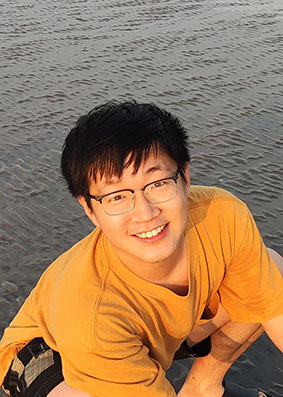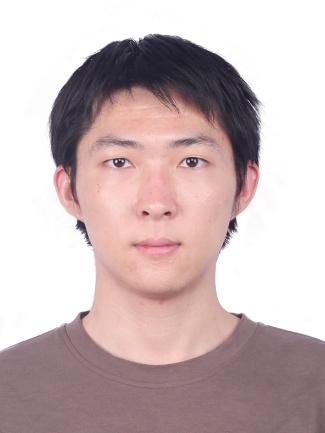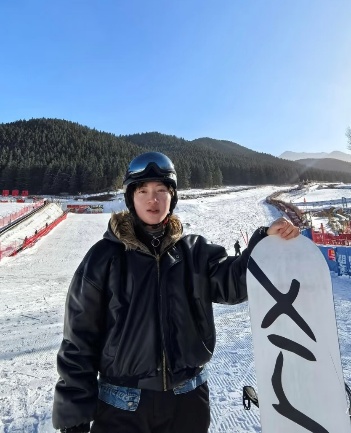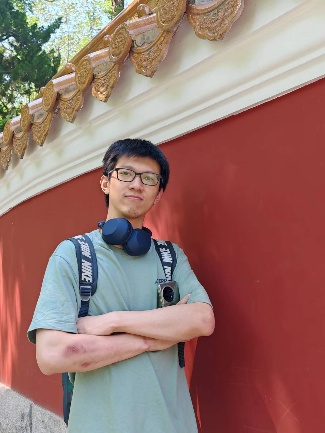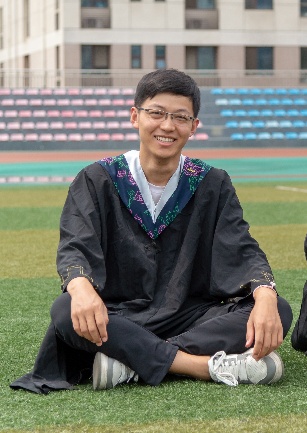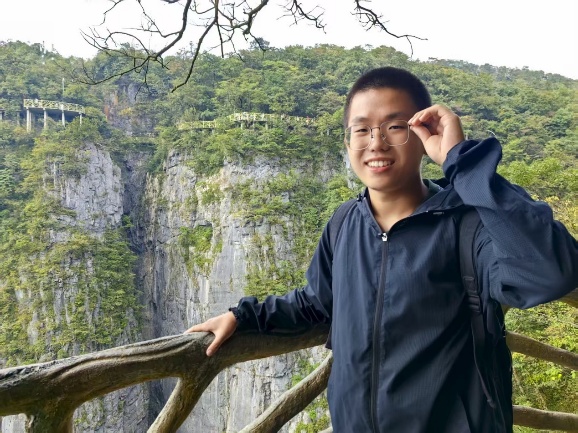季泉江课题组介绍
| Principal Investigator |
|
| Research |
We harness natural diversity, mechanistic insight, and protein engineering to discover and develop next‑generation genome editing systems. Our goals are to overcome core limitations of current editors and enable rapid, scalable genetics in major human pathogens to dissect infection and drug‑resistance mechanisms, and build CRISPR-based precision therapeutics to combat genetic diseases and multidrug‑resistant infections. 1. Discovery, mechanism, and engineering of new genome editing systems. Existing CRISPR tools are constrained by targeting scope, specificity, and deliverability. We seek compact nucleases with expanded targeting range and high fidelity that are compatible with in vivo delivery. We integrate computational mining of microbial genomes, biochemical and biophysical characterization, high‑resolution structural biology, and both directed evolution and structure‑guided design to elucidate mechanisms and engineer improved editors. Selected advances: 2. Rapid genetic tools for major human pathogens. The AMR crisis demands scalable functional genomics to reveal physiology, virulence, and drug targets, yet many pathogens remain genetically intractable. We build fast, efficient editing and regulation platforms tailored to priority pathogens (e.g., Staphylococcus aureus, Pseudomonas aeruginosa, Klebsiella pneumoniae, Mycobacteria, Acinetobacter). We engineer Cas9/Cas12‑based genome editors, deaminase‑mediated base editors, and prime editors, optimize delivery and repair strategies, and develop genome‑wide CRISPR interference/activation screening platforms using protein engineering and synthetic biology. Our toolkits accelerate target discovery and mechanistic studies and are broadly shared with the community via Addgene (http://www.addgene.org/Quanjiang_Ji/). Selected advances: 3. CRISPR-based precision antimicrobials. Conventional antibiotics disrupt the microbiota and select for resistance. We develop phage‑delivered, CRISPR‑based therapeutics that couple species‑specific killing with sequence‑specific removal of resistance and virulence determinants. Using our compact, high‑specificity systems, we are building a modular, upgradeable antimicrobial platform designed to minimize collateral damage to beneficial microbes, mitigate resistance evolution, and synergize with existing antibiotics. |
| Publications |
Selected Publications 16. Wang, Z.#, Wang, Y.#, Gao, H., Dai, J., Tang, N., Wang, Y.N., Ji, Q.* Phage-associated Cas12p nucleases require binding to bacterial thioredoxin for activation and cleavage of target DNA. Nature Microbiology (accepted). 15. Fu, W.#, Ma, J.#, Wang, Z., Tang, N., Pan, D., Su, M., Wu, Z., Gan, J., Ji, Q.* (2025) Mechanisms and engineering of a miniature type V-N CRISPR-Cas12 effector enzyme. Nature Communications 16: 5667. 14. Zhang, H., Ma, J., Wu, Z., Chen, X., Qian, Y., Chen, W., Wang, Z., Zhang, Y., Zhu, H., Huang, X., Ji, Q.* (2024) BacPE: a versatile prime-editing platform in bacteria by inhibiting DNA exonucleases. Nature Communications 15: 825. 13. Wang, Y., Wang, Z., Chen, W., Ren, Z.H., Gao, H., Dai, J., Luo, G.Z., Wu, Z.*, Ji, Q.* (2024) A KDPG sensor RccR govens Pseudomonas aeruginosa carbon metabolism and aminoglycoside antibiotic tolerance. Nucleic Acids Research 52: 967-976. 12. Su, M.#, Li, F.#, Wang, Y.#, Gao, Y., Lan, W., Shao, Z., Zhu, C., Tang, N., Gan, J., Wu, Z.*, Ji, Q.* (2024) Molecular basis and engineering of miniature Cas12f with C-rich PAM specificity. Nature Chemical Biology 20: 180-189. 11. Wu, Z.#, Liu, D.#, Pan, D.#, Yu, H., Shi, J., Ma, J., Fu, W., Wang, Z., Zheng, Z., Qu, Y., Li, F., Chen, W., Huang, X., Shen, H.*, Ji, Q.* (2023) Structure and engineering of miniature Acidibacillus sulfuroxidans Cas12f1. Nature Catalysis 6:695-709. 10. Chen, W.#, Ma, J.#, Wu, Z., Wang, Z., Zhang, H., Fu, W., Pan, D., Shi, J., Ji, Q.* (2023) Cas12n nucleases, early evolutionary intermediates of type V CRISPR, comprise a distinct family of miniature genome editors. Molecular Cell 83: 2768-2780. 9. Wang, Yuj., Wang, Ya., Pan, D., Yu, H., Zhang, Y., Chen, W., Li, F., Wu, Z.*, Ji, Q.* (2022) Guide RNA engineering enables efficient CRISPR editing with a miniature Syntrophomonas palmitatica Cas12f1 nuclease. Cell Reports 40: 111418. 8. Zhang, Y.#, Chen, W.#, Liu, D.#, Liu, Y., Wu, Z., Li, J., Zhang, S.Y.*, Ji, Q.* (2022) Molecular basis for cell-wall recycling regulation by transcriptional repressor MurR in Escherichia coli. Nucleic Acids Research 50: 5948-5960. 7. Wu, Z., Zhang, Y., Yu, H., Pan, D., Wang, Yuj., Wang, Ya., Li, F., Liu, C., Nan, H., Chen, W., Ji, Q.* (2021) Programmed genome editing by a miniature CRISPR-Cas12f nuclease. Nature Chemical Biology 17: 1132-1138. 6. Chen, W.#, Ren, Z.#, Tang, N., Chai, G., Zhang, H., Zhang, Y., Ma, J., Wu, Z., Shen, X., Huang, X., Luo, G.Z.*, Ji, Q.* (2021) Targeted genetic screening in bacteria with a Cas12k-guided transposase. Cell Reports 36: 109635. 5. Zhang, Y., Zhang, H., Xu, X., Wang, Yuj, Chen, W., Wang, Ya., Wu, Z., Tang, N., Wang, Yu, Zhao, S., Gan, J.*, Ji, Q.* (2020) Catalytic-state structure and engineering of Streptococcus thermophilus Cas9. Nature Catalysis 3: 813-823. 4. Chen, W., Zhang, H., Zhang, Y., Wang, Y., Gan, J.*, Ji, Q.* (2019) Molecular basis for the PAM expansion and fidelity enhancement of an evolved Cas9 nuclease. PLoS Biology 17: e3000496. 3. Wang, Y., Wang, Z., Chen, Y., Hua, X., Yu, Y., Ji, Q.* (2019) A highly efficient CRISPR-Cas9-based genome engineering platform in Acinetobacter baumannii toward the understanding of H2O2-sensing mechanism of OxyR. Cell Chemical Biology 26: 1732-42. 2. Song, L., Zhang, Y., Chen, W., Gu, T., Zhang, S.Y., Ji, Q.* (2018) Mechanistic insights into staphylopine-mediated metal acquisition. PNAS 115: 3942-7. 1. Chen, W., Zhang, Y., Yeo, W.S., Bae, T., Ji, Q.* (2017) Rapid and efficient genome editing in Staphylococcus aureus by using an engineered CRISPR/Cas9 system. JACS 139: 3790-5. Research Articles and Reviews (Full List) 2025 47. Fu, W.#, Ma, J.#, Wang, Z., Tang, N., Pan, D., Su, M., Wu, Z., Gan, J., Ji, Q.* (2025) Mechanisms and engineering of a miniature type V-N CRISPR-Cas12 effector enzyme. Nature Communications 16: 5667. 46. Zhang, H., Ji, Q.* (2025) Prime editing in bacteria with BacPE. Methods in Enzymology 712: 405. 45. Wang, Y.#, Tang, N.#, Ji, Q.* (2025) Systematic trans-activity comparison of several reported Cas12f nucleases. Chinese Journal of Chemistry 43: 1339. 44. Li, G., Cheng, Y., Yu, J., Zhu, Y., Ma, H., Zhou, Y., Pu, Z., Zhu, G., Yuan, Y., Zhang, Z., Zhou, X., Tian, K., Qiao, J., Hu, X., Chen, X.X., Ji, Q., Huang, X., Ma, B., Yao, Y.* (2025) Compact RNA editors with natural miniature Cas13j nucleases. Nature Chemical Biology 21: 280. 2024 43. Wang, Ya. Wang, Yu., Tang, N., Wang, Z., Pan, D., Ji, Q.* (2024) Characterization and engineering of a novel miniature Eubacterium siraeum CRISPR-Cas12f system. ACS Synthetic Biology 13: 2115. 42. Tang, N., Ji, Q.* (2024) Miniature CRISPR-Cas12 systems: mechanisms, engineering, and genome editing applications. ACS Chemical Biology 19: 1399. 41. Ma T., Xie N., Gao Y., Fu J., Tan C.E., Yang Q.E., Wang S., Shen Z., Ji Q., Parkhill J., Wu C., Wang Y.*, Walsh T.R.*, Shen J.* (2024) VirBR, a transcription regulator, promotes IncX3 plasmid transmission, and persistence of blaNDM-5 in zoonotic bacteria. Nature Communications 15: 5498. 40. Zhang, H., Ma, J., Wu, Z., Chen, X., Qian, Y., Chen, W., Wang, Z., Zhang, Y., Zhu, H., Huang, X., Ji, Q.* (2024) BacPE: a versatile prime-editing platform in bacteria by inhibiting DNA exonucleases. Nature Communications 15: 825. 39. Wang, Y., Wang, Z., Chen, W., Ren, Z.H., Gao, H., Dai, J., Luo, G.Z., Wu, Z.*, Ji, Q.* (2024) A KDPG sensor RccR govens Pseudomonas aeruginosa carbon metabolism and aminoglycoside antibiotic tolerance. Nucleic Acids Research 52: 967-976. 38. Tang, N., Wu, Z., Gao, Y., Chen, W., Wang, Z., Su, M., Ji, Q.* (2024) Molecular basis and genome editing applications of a compact Eubacterium ventriosum CRISPR-Cas9 system. ACS Synthetic Biology 13: 269-281. 37. Su, M.#, Li, F.#, Wang, Y.#, Gao, Y., Lan, W., Shao, Z., Zhu, C., Tang, N., Gan, J., Wu, Z.*, Ji, Q.* (2024) Molecular basis and engineering of miniature Cas12f with C-rich PAM specificity. Nature Chemical Biology 20: 180-189. 2023 36. Wu, Z.#, Liu, D.#, Pan, D.#, Yu, H., Shi, J., Ma, J., Fu, W., Wang, Z., Zheng, Z., Qu, Y., Li, F., Chen, W., Huang, X., Shen, H.*, Ji, Q.* (2023) Structure and engineering of miniature Acidibacillus sulfuroxidans Cas12f1. Nature Catalysis 6:695-709. 35. Chen, W.#, Ma, J.#, Wu, Z., Wang, Z., Zhang, H., Fu, W., Pan, D., Shi, J., Ji, Q.* (2023) Cas12n nucleases, early evolutionary intermediates of type V CRISPR, comprise a distinct family of miniature genome editors. Molecular Cell 83: 2768-2780. 34. Gründling, A.*, Ji, Q.* (2023) Introduction of a CRISPR-nCas9 gene-targeting plasmid into Staphylococcus aureus for gene disruption. Cold Spring Harbor Protocols doi: 10.1101/pdb.prot107925. 33. Gründling, A.*, Ji, Q.* (2023) Identification of editable sites, spacer oligonucletide design, generation of the gene-targeting CRISPR-nCas9 plasmid for gene disruption in Staphylococcus aureus using the CRISPR-nCas9 and cytidine deaminase system. Cold Spring Harbor Protocols doi: 10.1101/pdb.prot107924. 32. Gründling, A.*, Ji, Q.*, Salipante, S.J.* (2023) Using CRISPR-Cas9-based methods for genome editing in Staphylococcus aureus. Cold Spring Harbor Protocols doi: 10.1101/pdb.top107919. 31. Li, X., Zhang, G., Huang, S., Liu, Y., Tang, J., Zhong, M., Wang, X., Sun, W., Yao, Y., Ji, Q., Wang, X., Liu, J., Zhu, S., Huang, X.* (2023) Development of a versatile nuclease prime editor with upgraded precision. Nature Communications 14: 305. 30. Wang, Z.#, Zhang, Y.#, Chen, C., Zhu, R., Jiang, J., Weng, T.C., Ji, Q.*, Huang, Y.*, Fang, C.*, Liu, W.* (2023) Mapping the complete photocycle that powers a large stokes shift red fluorescent protein. Angew Chem 62: e202212209. 2022 29. Wang, Yuj., Wang, Ya., Pan, D., Yu, H., Zhang, Y., Chen, W., Li, F., Wu, Z.*, Ji, Q.* (2022) Guide RNA engineering enables efficient CRISPR editing with a miniature Syntrophomonas palmitatica Cas12f1 nuclease. Cell Reports 40: 111418. 28. Wang, Z., Wang, Yu, Wang, Yuj., Chen, W., Ji, Q.* (2022) CRISPR/Cpf1-mediated multiplex and large-fragment gene editing in Staphylococcus aureus. ACS Synthetic Biology 11: 3049-3057. 27. Zhang, Y.#, Chen, W.#, Liu, D.#, Liu, Y., Wu, Z., Li, J., Zhang, S.Y.*, Ji, Q.* (2022) Molecular basis for cell-wall recycling regulation by transcriptional repressor MurR in Escherichia coli. Nucleic Acids Research 50: 5948-5960. 26. Zhang, H., Zhang, Y., Wang, W.X., Chen, W.Z., Zhang, X., Huang, X., Chen, W.*, Ji, Q.* (2022) PAM-expanded Streptococcus thermophilus Cas9 C-to-T and C-to-G base editors for programmable base editing in mycobacteria. Engineering 15: 67-77. 25. Huang, X., Li, X., An, H., Wang, J., Ding, M., Wang, L., Li, L., Ji, Q., Qu, F., Wang, H., Xu, Y., Lu, X., He, Y., Zhang, J.R.* (2022) Capsule type defines the capability of Klebsiella pneumoniae in evading Kupffer cell capture in the liver. PLoS Pathogens 18: e1010693. 24. Zhang, G.#, Liu, Y.#, Huang S.#, Qu, S., Cheng, D., Yao, Y., Ji, Q., Wang, X.*, Huang, X.*, Liu, J.* (2022) Enhancement of prime editing via xrRNA motif-joined pegRNA. Nature Communications 13: 1856. 23. Li, X., Wang, X., Sun, W., Huang, S., Zhong, M., Yao, Y., Ji, Q., Huang, X.* (2022) Enhancing prime editing efficiency by modified pegRNA with RNA G-quadruplexes. Journal of Molecular Cell Biology 14: mjac022. 22. Yu, L., Cao, Q., Chen, W., Yang, N., Yang, C.G., Ji, Q., Wu, M., Bae, T. Lan, L.* (2022) A novel copper-sensing two-component system for inducing Dsb gene expression in bacteria. Science Bulletin 67: 198- 2021 21. Wu, Z., Zhang, Y., Yu, H., Pan, D., Wang, Yuj., Wang, Ya., Li, F., Liu, C., Nan, H., Chen, W., Ji, Q.* (2021) Programmed genome editing by a miniature CRISPR-Cas12f nuclease. Nature Chemical Biology 17: 1132-1138. 20. Chen, W.#, Ren, Z.#, Tang, N., Chai, G., Zhang, H., Zhang, Y., Ma, J., Wu, Z., Shen, X., Huang, X., Luo, G.Z.*, Ji, Q.* (2021) Targeted genetic screening in bacteria with a Cas12k-guided transposase. Cell Reports 36: 109635. 19. Liu, Y., Chen, Y., Dang, L., Liu, Y., Huang, S., Wu, S., Ma, P., Jiang, H., Li, Y., Pan, Y., Wei, Y., Ma, X., Liu, M., Ji, Q., Chi, T., Huang, X.*, Wang, X.*, Zhou, F.* (2021) EasyCatch, a conventient, sensitive and specific CRISPR detection system for cancer gene mutations. Molecular Cancer 20: 157. 2020 18. Zhang, Y., Zhang, H., Xu, X., Wang, Yuj, Chen, W., Wang, Ya., Wu, Z., Tang, N., Wang, Yu, Zhao, S., Gan, J.*, Ji, Q.* (2020) Catalytic-state structure and engineering of Streptococcus thermophilus Cas9. Nature Catalysis 3: 813-823. 17. Yu, H.#, Wu, Z.#, Chen, X., Ji, Q.*, Tao, S.* (2020) CRISPR-CBEI: a designing and analyzing tool kit for cytosine base editor-mediated gene inactivation. mSystems 5: e00350-20. 16. Wang, Y.*, Wang, Z., Ji, Q.* (2020) CRISPR-Cas9-based genome editing and cytidine base editing in Acinetobacter baumannii. STAR Protocols DOI: 10.1016/j.xpro.2020.100025. 15. Pi, Y., Chen, W., Ji, Q.* (2020) Structural basis of Staphylococcus aureus surface protein SdrC. Biochemistry 59: 1465-1469. 14. Zhang, Y., Zhang, H., Wang, Z., Wu, Z., Wang, Y., Tang, N., Xu, X., Zhao, S., Chen, W.*, Ji, Q.* (2020) Programmable adenine deamination in bacteria using a Cas9-adenine-deaminase fusion. Chemical Science 11: 1657-1664. 13. Wu, Z., Wang, Y., Zhang, Y., Chen, W., Wang, Y., Ji, Q.* (2020) Strategies for developing CRISPR-based gene editing methods in bacteria. Small Methods 4: 1900560. 2019 12. Chen, W., Zhang, H., Zhang, Y., Wang, Y., Gan, J.*, Ji, Q.* (2019) Molecular basis for the PAM expansion and fidelity enhancement of an evolved Cas9 nuclease. PLoS Biology 17: e3000496. 11. Wang, Y., Wang, Z., Chen, Y., Hua, X., Yu, Y., Ji, Q.* (2019) A highly efficient CRISPR-Cas9-based genome engineering platform in Acinetobacter baumannii toward the understanding of H2O2-sensing mechanism of OxyR. Cell Chemical Biology 26: 1732-42. 10. Zhang, Y., Sun, X., Qian, Y., Yi, H., Song, K., Zhu, H., Zonta, F., Chen, W., Ji, Q., Miersch, S, Sidhu, S.S.*, Wu, D.* (2019) A potent anti-SpuE antibodyallosterically inhibits type III secretion system and attenuates virulence of Pseudomonas aeruginosa. Journal of Molecular Biology 431:4882-4896. 9. Fu, T., Liu, L., Yang, Q.L., Wang, Y., Xu, P., Zhang, L., Liu, S., Dai, Q., Ji, Q., Xu, G.L., He, C., Luo, C.*, Zhang, L.* (2019) Thymine DNA glycosylase recognizes the geometry alteration of minor grooves induced by 5-formylcytosine and 5-carboxylcytosine. Chemical Science 10: 7407-17. 8. He, T., Wang, R., Liu, D., Walsh, T.R., Zhang, R., Lv, Y., Ke, Y., Ji, Q., Wei, R., Liu, Z., Shen, Y., Wang, G., Sun, L., Lei, L., Lv, Z., Li, Y., Pang, M., Wang, L., Sun, Q., Fu, Y., Song, H., Hao, Y., Shen, Z., Wang, S., Chen, G., Wu, C., Shen, J., Wang, Y. (2019) Emergence of plasmid-mediated high-level tigecycline resistance genes in animals and humans. Nature Microbiology 4: 1450-6. 7. Sun, Q.#, Wang, Y.#, Dong, N., Shen, L., Zhou, H., Hu, Y., Gu, D., Chen, S., Zhang, R.*, Ji, Q.* (2019) Application of CRISPR/Cas9-based genome editing in studying the mechanism of pandrug resistance in Klebsiella pneumoniae. Antimicrobial Agents and Chemotherapy 63: e00113-19. 2018 6. Wang, Y., Wang, S., Chen, W., Song, L., Shen, Z., Yu, F., Li, M., Ji, Q.*(2018) Precise and efficient genome editing in Klebsiella pneumoniae using CRISPR-Cas9 and CRISPR-assisted cytidine deaminase. Applied and Environmental Microbiology 84: e01834-18. 5. Chen, W., Zhang, Y., Zhang, Y., Pi, Y., Gu, T., Song, L., Wang, Y., Ji, Q.* (2018) CRISPR/Cas9-based genome editing in Pseudomonas aeruginosa and cytidine deaminase-mediated base editing in Pseudomonas species. iScience 6: 222-31. 4. Wei, W.#, Zhang, Y.#, Gao, R., Li, J., Xu, Y., Wang, S., Ji, Q.*, Feng, Y.* (2018) Crystal structure and acetylation of BioQ suggests a novel regulatory switch for biotin biosynthesis in Mycobacterium smegmatis. Molecular Microbiology 109: 642-62. 3. Song, L., Zhang, Y., Chen, W., Gu, T., Zhang, S.Y., Ji, Q.* (2018) Mechanistic insights into staphylopine-mediated metal acquisition. PNAS 115: 3942-7. 2. Gu, T.#, Zhao, S.#, Pi, Y., Chen, W., Chen, C., Liu, Q., Li, M., Han, D.*, Ji, Q.* (2018) Highly efficient base editing in Staphylococcus aureus using an engineered CRISPR RNA-guided cytidine deaminase. Chemical Science 9: 3248-53. 2017 1. Chen, W., Zhang, Y., Yeo, W.S., Bae, T., Ji, Q.* (2017) Rapid and efficient genome editing in Staphylococcus aureus by using an engineered CRISPR/Cas9 system. JACS 139: 3790-5. Book Chapters 4. Chen, W. & Ji, Q. (2024) CRISPR/Cas9-based genome editing of Pseudomonas aeruginosa. Methods in Molecular Biology 2721:3-12. 3. Wu, Z. & Ji, Q. (2024) Bacterial CRISPR systems and applications. Molecular Medical Microbiology 633-652. 2. Wang, Z., Wang, Y. & Ji, Q. (2022) Genome editing in Klebsiella pneumoniae using CRISPR/Cas9 technology. Methods in Molecular Biology 2079:105-117. 1. Chen, W. & Ji, Q. (2020) Genetic manipulation of MRSA using CRISPR/Cas9 technology. Methods in Molecular Biology 2069:113-124. |
| Patents |
8. 季泉江、王宇。一种用于鲍曼不动杆菌胞嘧啶碱基编辑质粒及其应用。申请号:201910644444.1 |
| Group Activities |

Tianmu Lake, 2019_10
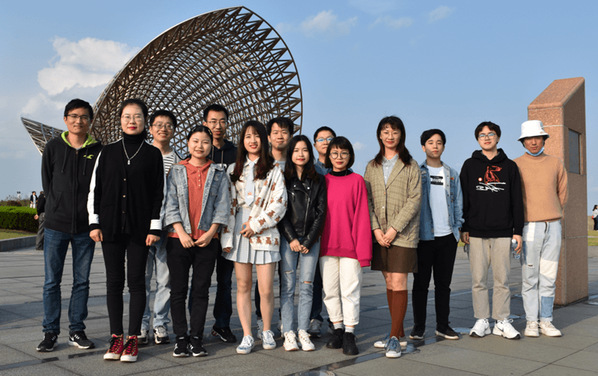
Dishui Lake, 2020_10

Anji, 2021_10
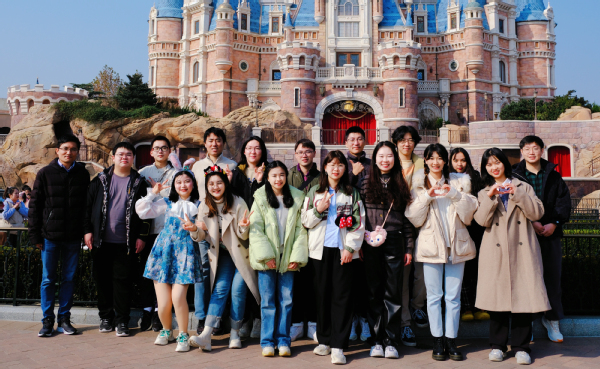
Disneyland, 2023_12
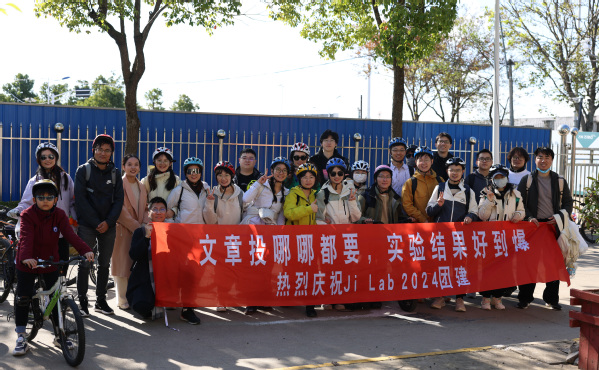
Changxing Island, 2024_11
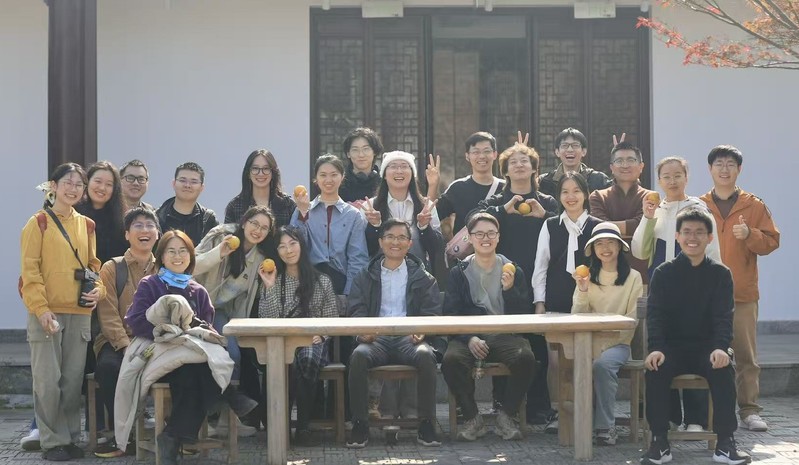
Yangcheng Lake, 2025_11
| Current Group Members |
| Zhaowei Wu(吴兆韡) Associate Research Fellow Associate Research Fellow, ShanghaiTech University, 2024-Current; Assistant Research Fellow, ShanghaiTech University, 2021-2024; Postdoc., ShanghaiTech University, 2018-2021; Ph.D., Northwest A&F University, 2014-2018; B.S., Northwest A&F University, 2010-2014. Email: wuzw1@shanghaitech.edu.cn |
| Zhipeng Wang(王志鹏) Postdoc Postdoc., ShanghaiTech University, 2023-current; Ph.D., ShanghaiTech University, 2018-2023; B.S., Zhengzhou University, 2014-2018. Email: wangzhp1@shanghaitech.edu.cn |
| Yujue Wang(王玉珏) Postdoc Postdoc., ShanghaiTech University, 2023-current; Ph.D., ShanghaiTech University, 2018-2023; B.S., Shandong University, 2014-2018. Email: wangyj6@shanghaitech.edu.cn |
| Hongyuan Zhang(张洪源) Postdoc Postdoc., ShanghaiTech University, 2023-current; Ph.D., ShanghaiTech University, 2018-2023; B.S., Shandong University, 2014-2018. Email: zhanghy2@shanghaitech.edu.cn |
| Na Tang(汤娜) Postdoc Postdoc., ShanghaiTech University, 2024-Current; Ph.D., ShanghaiTech University, 2019-2024; B.S., China Pharmaceutical University, 2015-2019. Email: tangna1@shanghaitech.edu.cn |
| Yannan Wang(王艳男) Postdoc Postdoc., ShanghaiTech University, 2025-Current; Ph.D., ShanghaiTech University, 2019-2025; B.S., Wuhan University of Technology, 2015-2019. Email: wangyn6@shanghaitech.edu.cn |
| Fei Zhang(张飞) Postdoc Postdoc., ShanghaiTech University, 2025-Current; Ph.D., University of Chinese Academy of Sciences, 2020-2025; M.S., University of Chinese Academy of Sciences, 2017-2020; B.S., Heilongjiang University, 2013-2017. Email: zhangfei1@shanghaitech.edu.cn |
| Jin Shi (史进) Graduate student Graduate student, ShanghaiTech University, 2021-Current; B.S., China Pharmaceutical University, 2017-2021. Email: shijin@shanghaitech.edu.cn |
| Mengjiao Su(苏梦娇) Graduate student Graduate student, ShanghaiTech University, 2021-Current; B.S., Chengdu Medical College, 2017-2021. Email: sumj@shanghaitech.edu.cn |
| Wenhan Fu(傅文翰) Graduate student Graduate student, ShanghaiTech University, 2021-Current; B.S., ShanghaiTech University, 2017-2021. Email: fuwh@shanghaitech.edu.cn |
| Hui Gao(高慧) Graduate student Graduate student, ShanghaiTech University, 2021-Current; B.S., Shanghai Normal University, 2017-2021. Email: gaohui@shanghaitech.edu.cn |
| Jiani Dai(戴佳妮) Graduate student Graduate student, ShanghaiTech University, 2022-Current; B.S., Hunan Agricultural University, 2018-2022. Email: Daijn2022@shanghaitech.edu.cn |
| Ruoyun Bai(白若云) Graduate student Graduate student, ShanghaiTech University, 2022-Current; B.S., China Agricultural University, 2018-2022. Email: Bairy12022@shanghaitech.edu.cn |
| Xiaoyang Chen(陈萧阳) Graduate student Graduate student, ShanghaiTech University, 2022-Current; B.S., Nanjing University, 2018-2022. Email: Chenxy2022@shanghaitech.edu.cn |
| Xin Nai(奈鑫) Graduate student Graduate student, ShanghaiTech University, 2023-Current; B.S., China Pharmaceutical University, 2019-2023. Email: naixin2023@shanghaitech.edu.cn |
| Xiaoyu Zhang(张晓禹) Graduate student Graduate student, ShanghaiTech University, 2023-Current; B.S., ShanghaiTech University, 2019-2023. Email: zhangxy22023@shanghaitech.edu.cn |
| Yi Jin(金逸) Graduate student Graduate student, ShanghaiTech University, 2023-Current; B.S., Shandong University, 2019-2023. Email: jinyi2023@shanghaitech.edu.cn |
| Zhongmin Tong(仝重敏) Graduate student Graduate student, ShanghaiTech University, 2024-Current; B.S., China Pharmaceutical University, 2020-2024. Email: tongzhm2024@shanghaitech.edu.cn |
| Yuan Wei(魏媛) Graduate student Graduate student, ShanghaiTech University, 2024-Current; B.S., Inner Mongolia Agricultural University, 2020-2024. Email: weiyuan2024@shanghaitech.edu.cn |
| Haijun Ye(冶海军) Graduate student Graduate student, ShanghaiTech University, 2024-Current; B.S., Northwest A&F University, 2020-2024. Email: yehj2024@shanghaitech.edu.cn |
| Yongji Gu(顾永吉) Graduate student Graduate student, ShanghaiTech University, 2024-Current; B.S., Shanghai Ocean University, 2020-2024. Email: guyj2024@shanghaitech.edu.cn |
| Boyan Liu(刘博彦) Graduate student Graduate student, ShanghaiTech University, 2024-Current; B.S., Shandong Agricultural University, 2020-2024. Email: liuby2024@shanghaitech.edu.cn |
| Wanxiang Xiong(熊皖湘) Undergraduate student Email: xiongwx2024@shanghaitech.edu.cn |
| Bingxin Yang(杨炳欣) Undergraduate student Email:yangbx2023@shanghaitech.edu.cn |
Alumni |
|
Liqiang Song(宋立强)
Postdoc 2016-2018
Current: UT Health Science Center (Postdoc)
Yu Wang(王宇)
Postdoc 2017-2019
Current: Jiangxi Agricultural University (Associate Professor)
Yani Zhao(赵雅妮)
B.S. 2015-2019
Current: UNC at Chapel Hill (Ph.D. candidate)
Tongnian Gu (顾桐年)
Ph.D. 2015-2020
Current: Institute of Biophysics, CAS (Postdoc)
Yishuang Pi (皮义双)
M.S. 2017-2020
Current: Viva Biotech
Chang Liu (刘畅)
B.S. 2017-2021
Current: University of California, Berkeley (Ph.D. candidate)
Yifei Zhang(张翼飞)
Ph.D. 2016-2021
Weizhong Chen(陈未中)
Postdoc, Assistant, Associate Professor 2016-2022
Current: Ningbo University (Associate Professor)
Ya Zhang(张雅)
Ph.D. 2017-2022
Current: Rice University (Postdoc)
Fan Li(李帆)
Postdoc 2020-2022
Current: Jinling Institute of Technology (Assistant Professor)
Jiacheng Ma(马佳诚)
Ph.D. 2020-2025
Current: Beijing Tuojie
Deng Pan(潘登)
Ph.D. 2020-2025
Current: Guangzhou Laboratory (Postdoc)











